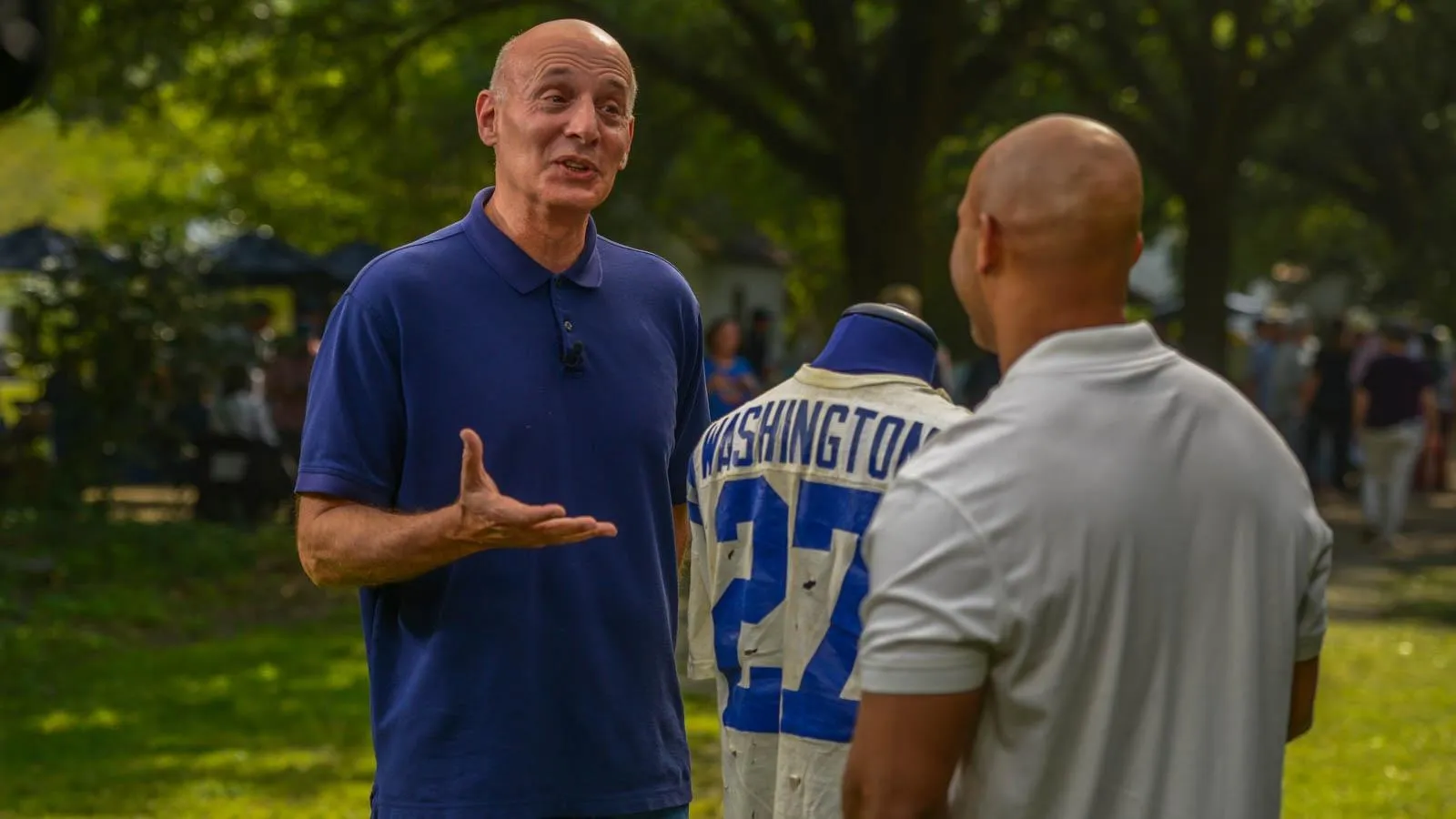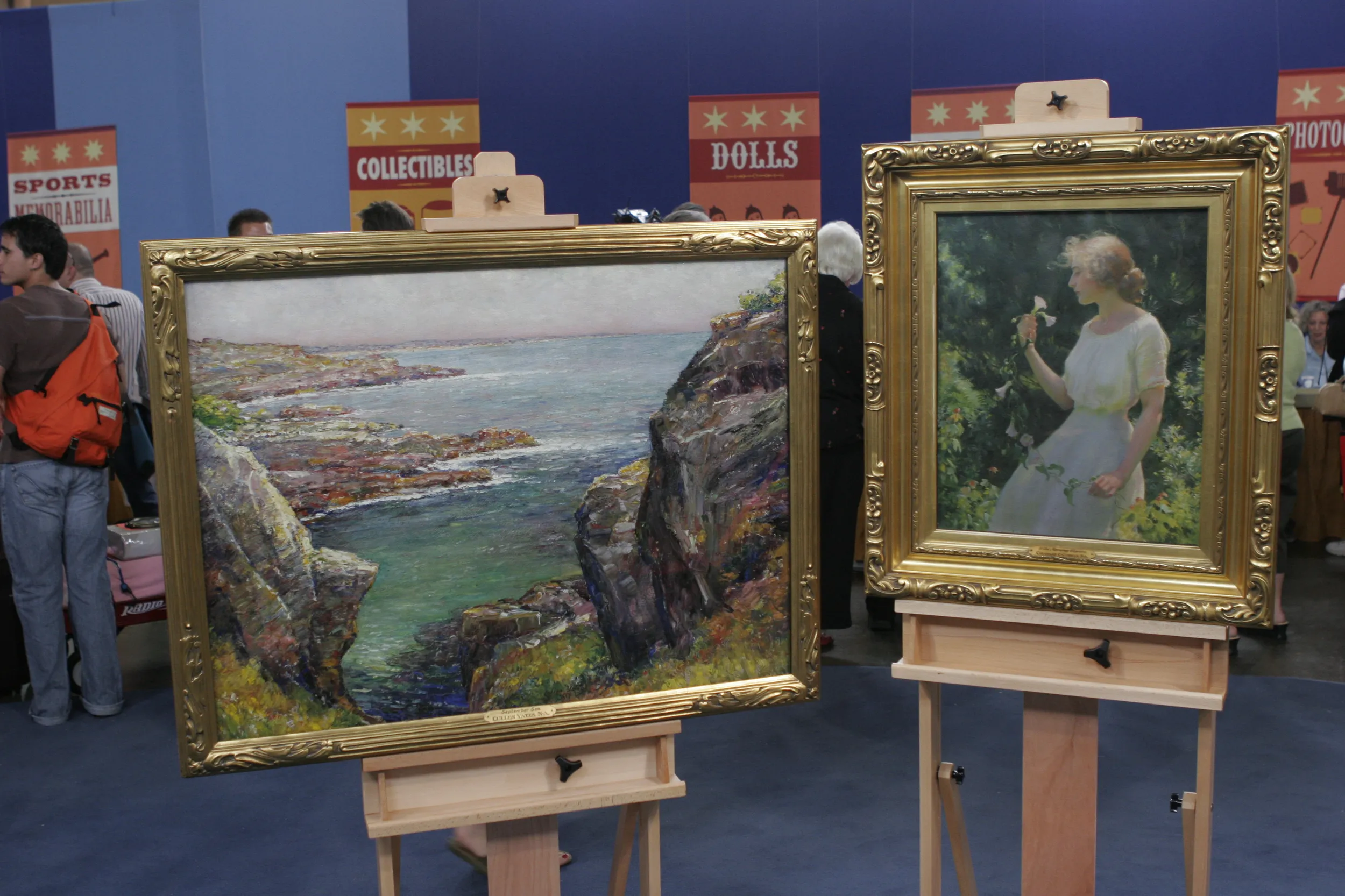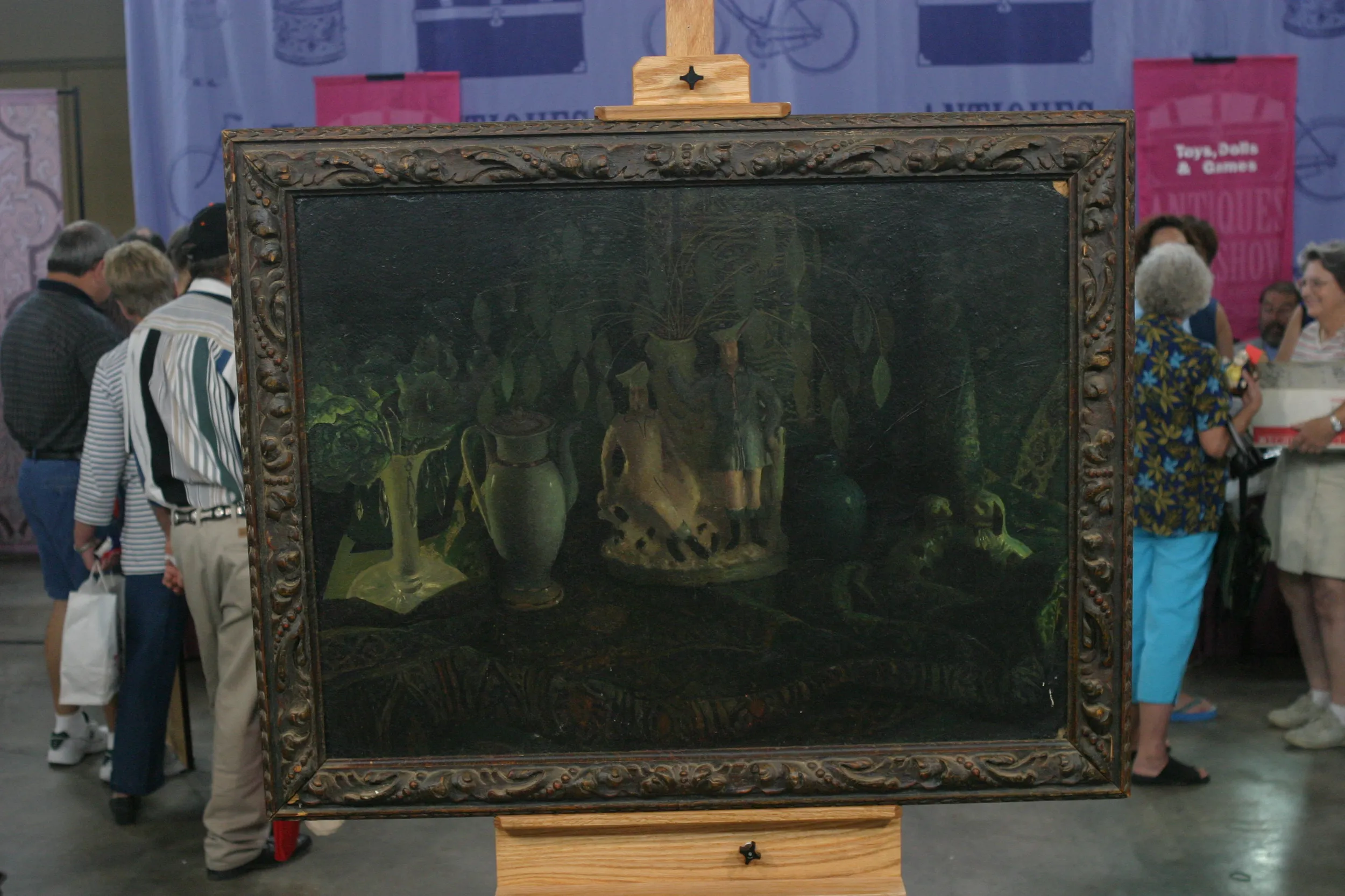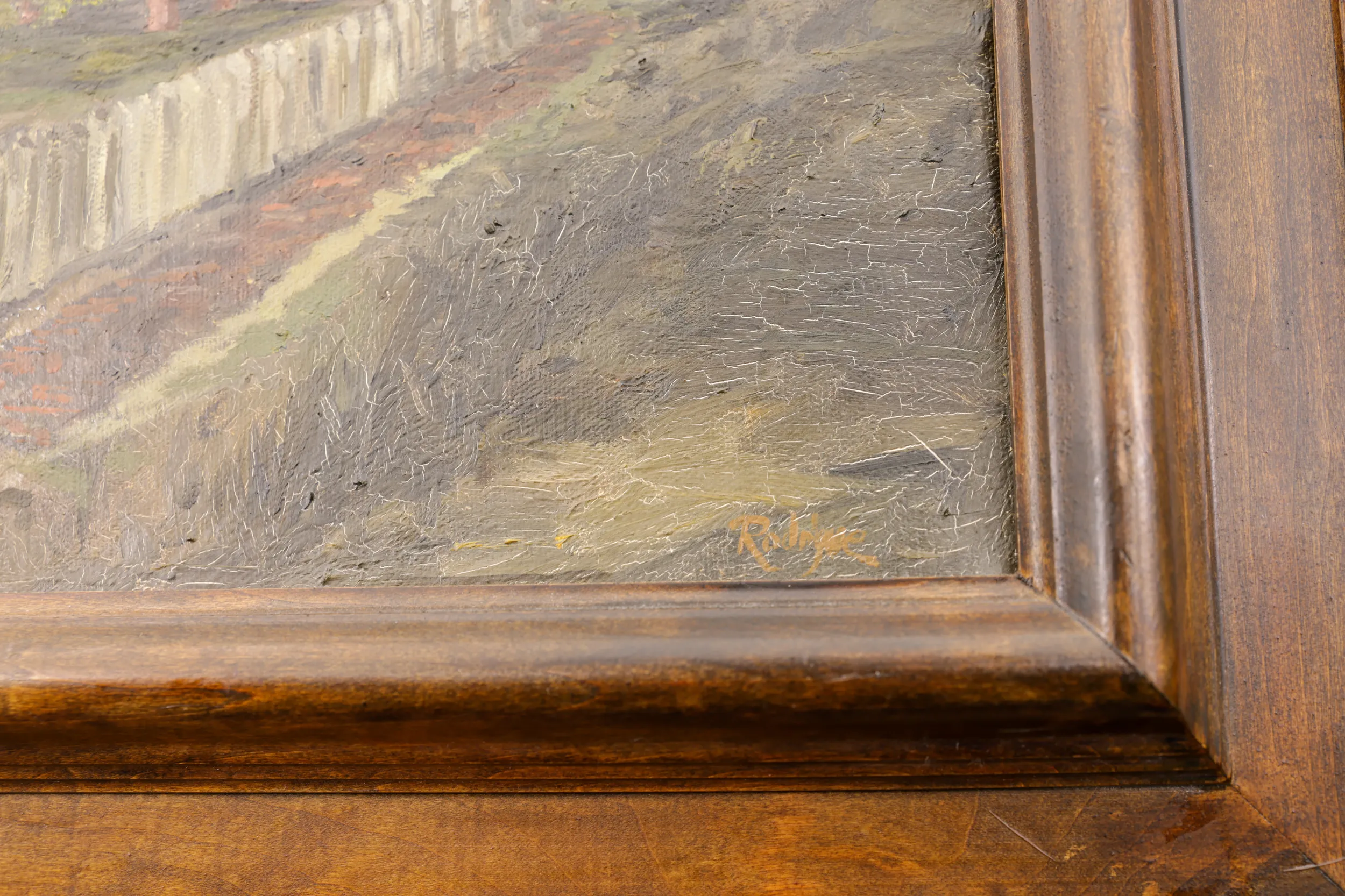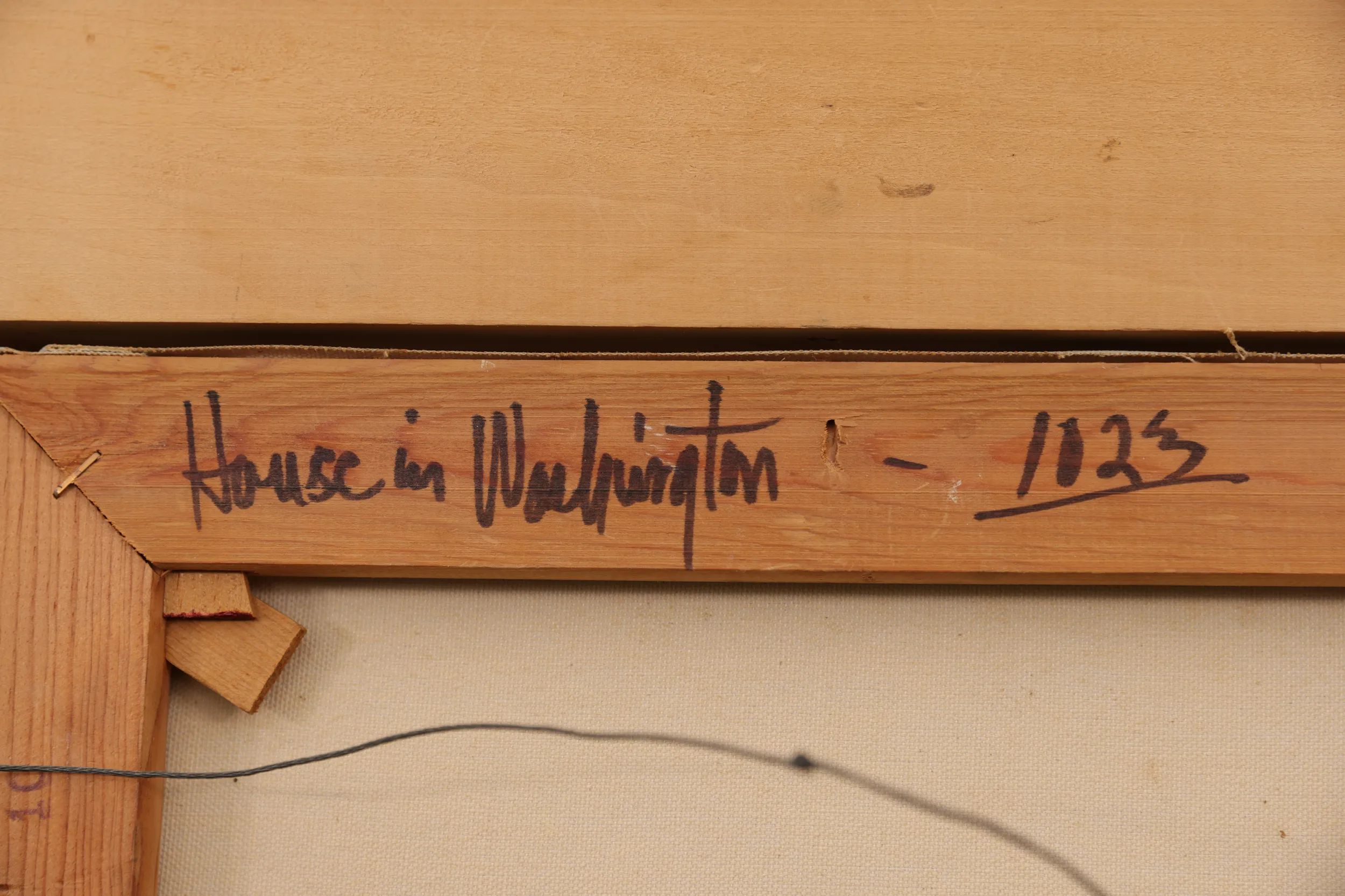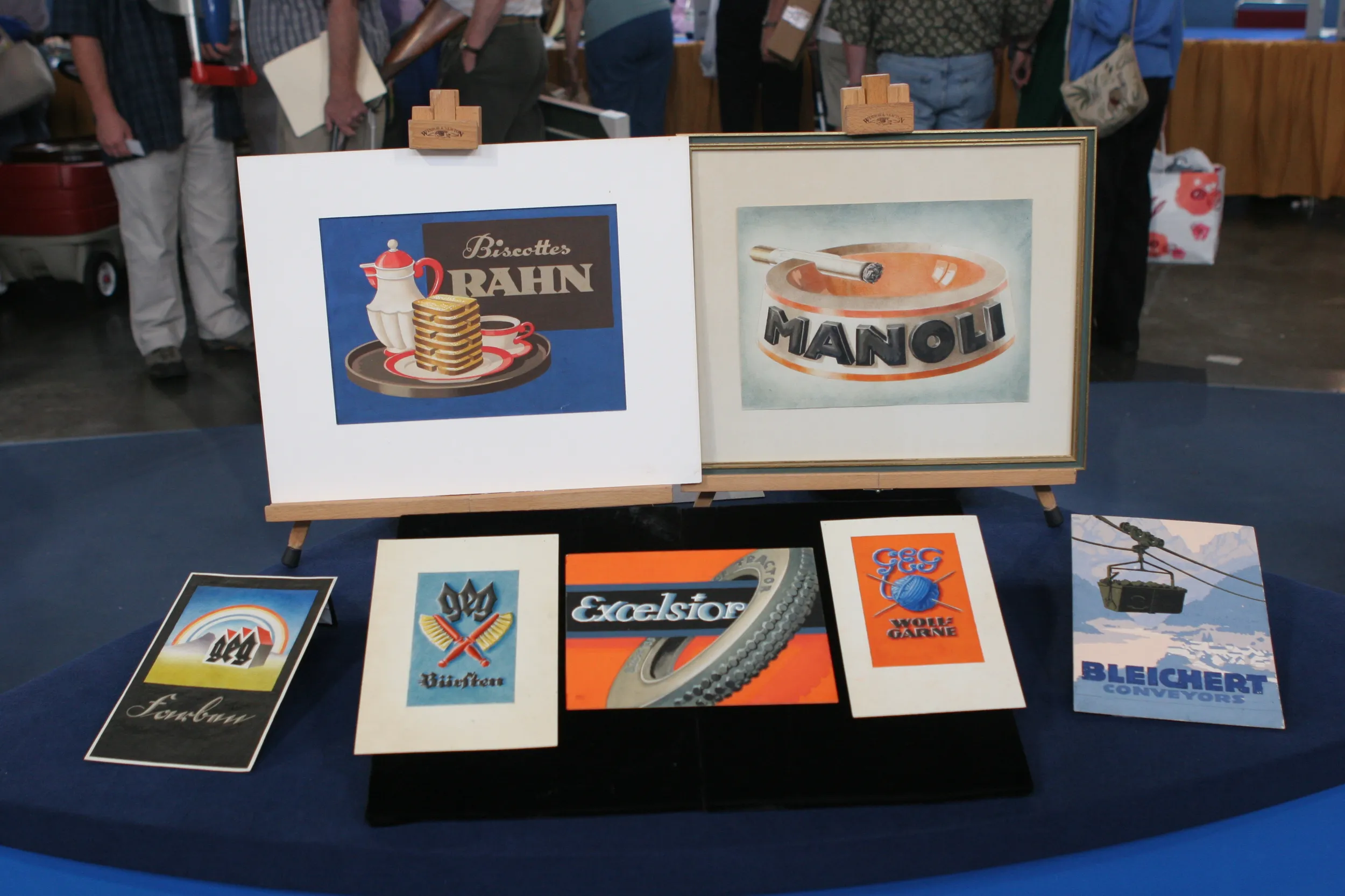GUEST: It was painted by George Rodrigue, who internationally is known as the Blue Dog artist. It was done in 1969, when he was probably about 25 years old. The title is on the back of the painting, and it's called A House in Washington. And he did work like this early in his career because he was concerned that these style homes would, through progress, be taken down or sold or destroyed. I acquired it through a local estate sale company.
APPRAISER: And do you mind revealing what you paid for the painting?
GUEST: Uh, I paid $4,300.
APPRAISER: When did you purchase the painting?
GUEST: In November of 2021.
APPRAISER: And did you know what you were getting?
GUEST: Yes, I did recognize the name. I actually bought it because my two grandsons are Cajun, and I guess that's really why I purchased it.
APPRAISER: George Rodrigue was born in 1944 in New Iberia, Louisiana. Went to school at the University of Southwest Louisiana, in Lafayette. He then went on to further his training in Los Angeles and then came back to Louisiana, to his hometown. He wanted to preserve the Cajun culture and painted, during that early first few years of his return, primarily bayou landscapes. So as you see here, it's an oil on canvas. It's a classic Creole cottage with foreground trees covered in Spanish moss, and it's a beautiful example of Louisiana painting and bayou landscapes. George Rodrigue was, as you note, famous for being the Blue Dog painter. What can you tell me about the Blue Dog?
GUEST: He was commissioned to do one of the Jazz Fe, Fest posters, and if I'm not mistaken, it was the one for, um, Pete Fountain. And he decided to put the Blue Dog on that poster, and it was a huge hit.
APPRAISER: Blue Dog became iconic...
GUEST: Yes.
APPRAISER: ...as maybe a symbol of New Orleans and Louisiana.
GUEST: Yes.
APPRAISER: He was a successful painter as a commercial artist. Designed three Jazz Fest posters with the Blue Dog, and also a very famous Absolut Vodka ad. This painting, it's signed lower right and titled on the back, with also the George Rodrigue stamp on the stretcher, so that helps to authenticate the painting. It is in its original frame, and that does tend to add value. There is some crazing in the painting. I think there are definite benefits to having paintings conserved. It definitely would add value and also quality to the work. Do you have any ideas as to what it might bring if you were to sell it?
GUEST: I know what they said that it was verbally appraised at, $20,000. They were asking 13, and I paid significantly less than that. So do I know what it's really worth? I would hope that it was, be worth at least $4,300, 'cause that's what I paid. (laughs)
APPRAISER: I think if it were in perfect condition, might bring $20,000 to $25,000 at auction. But in its current condition, I would say maybe
$12,000 to $18,000 would be an appropriate, and possibly conservative, auction estimate.
GUEST: Okay.
APPRAISER: It's a wonderful example of Louisiana painting, and we're happy to have it.
GUEST: Thank you. I'm thrilled to be here.
APPRAISER: (laughs) Good.

